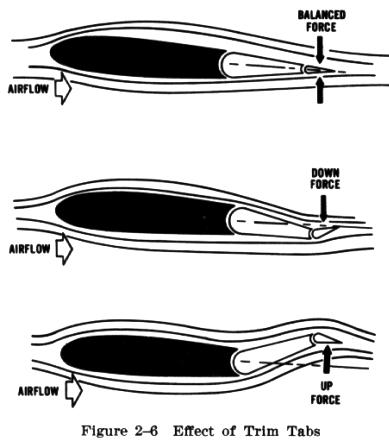Most airplanes, except a few of the very oldest and lightest types, are equipped with trim tabs that can be controlled from the cockpit. On those other types, the tabs are manually adjustable only when the airplane is on the ground.
Spoilers, though found only on certain airplane designs and most gliders, are mounted on the upper surface of each wing. Their purpose is to spoil or disrupt the smooth flow of air over the wing to reduce the lifting force of the wing. This provides the pilot with a means of increasing the rate of descent without increasing the airplane's speed.
